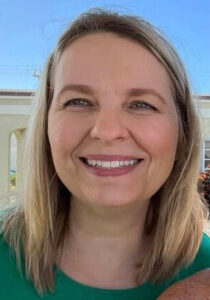In January 2023 I was driving to my monthly networking meeting and all of a sudden, my 2013 Infiniti Journey started chugging. I have had multiple flat tires in the past, so I knew this was something different. As I felt it slowing and coming to a halt, I pulled into the closest parking lot to get off the busy parkway. Luckily, I pulled right next door to an auto body shop. The next day when they gave me the estimate, I learned it was going to cost me $1,200 to repair it. At first, I was upset because I just had a whole work up on it not even a year before, but I knew I had to get it taken care of. The good news is that instead of having to put it on a credit card, I had the money in my emergency fund to cover it. Instead of it being a catastrophic event, it was simply an inconvenience.
According to a recent Nerdwallet survey, less than half (45%) of Americans would be able to cover a $1,000 emergency expense without turning to a credit card or loan. An emergency fund is an essential tool for financial security. It’s an amount of money set aside to cover unexpected expenses like my car repair, medical bills or job loss. Without an emergency fund, you might be forced to rely on credit cards or take out loans, which can lead to financial stress and long-term debt. In this post, I’m going to share 5 tips on how to build an emergency fund and secure your financial future.
1. Determine How Much You Need
The first step in building an emergency fund is to determine how much you need. A good rule of thumb is to have 3-6 months’ worth of expenses set aside. However, this may vary depending on your personal situation and your comfort level. Consider your monthly expenses and how long it would take you to find a new job if you lost your current one. Based on these factors, calculate how much you need to save to feel secure. Remember to re-evaluate each year as your financial situation changes.
2. Make It a Priority
Building an emergency fund should be a top financial priority. Consider setting up automatic transfers from your checking account to a separate account each month. By doing this, you’ll be building it up without even thinking about it. Treat it like a bill and make it a non-negotiable expense. You’ll be surprised how quickly your emergency fund grows when you make it a priority.
3. Start Small
If you don’t have much extra money to save, start with a small amount such as $1,000. Even putting aside $10 or $20 each week can add up over time. The key is to be consistent. Starting small allows you to build a habit and get into a saving mindset. Over time, you can increase the amount you save as your financial situation improves.
4. Keep It Accessible
You want to be able to access your emergency fund quickly in case of an unexpected expense. Consider keeping it in a high-yield savings account or money market account that earns interest but is also easily accessible. Avoid investments or accounts that have fees or penalties for early withdrawal. Keeping your emergency fund accessible and liquid will allow you to access it when you need it most. Think of your emergency fund as insurance that will keep you from going into debt.
5. Avoid Using It for Non-Emergencies
It can be tempting to dip into your emergency fund for non-emergency expenses but try to avoid doing so. Reserve your emergency fund for true emergencies only. This will ensure that you have enough money when you need it most. If you find yourself needing to use your emergency fund, make sure to replenish it as soon as possible. This is the most important key to ensure you always have a fund in place.
Remember, an emergency IS going to happen so you must be ready at all times. Building an emergency fund is a crucial part of financial security. By following these tips, you can start building your emergency fund and feel more secure about your financial future. Remember to determine how much you need, make it a priority, start small, keep it accessible, and avoid using it for non-emergencies. By doing so, you’ll be well on your way to achieving financial security and peace of mind.
Are you prepared? If not, make your plan to get there.

To schedule your complimentary consultation, please click here:





